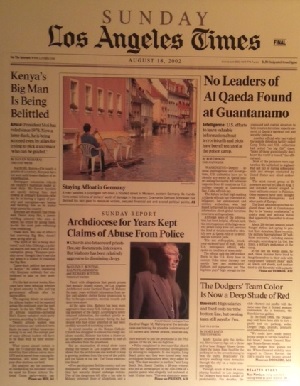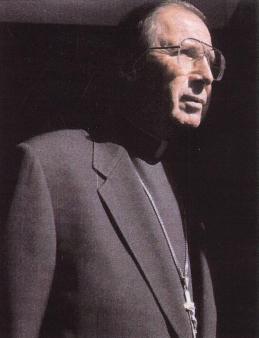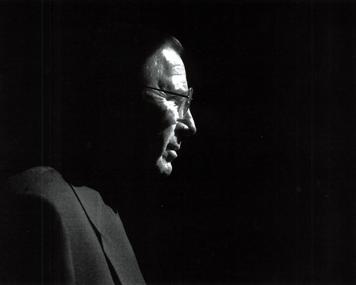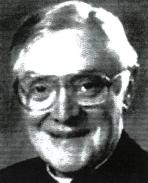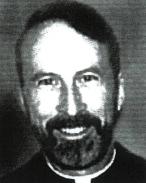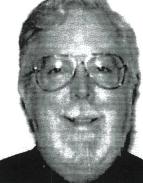Archdiocese for Years Kept Allegations of Abuse from Police Church also let accused priests flee, say documents, interviews But Mahony has been relatively aggressive in dismissing clergy By Glenn F. Bunting, Ralph Frammolino, and Richard Winton Los Angeles Times August 18, 2002 http://www.latimes.com/news/local/la-me-mahony18aug18.story [See also the profiles of 33 accused priests with photos, and essays on four of the priests: Revs. Nicolas Aguilar Rivera, Michael S. Baker, Theodore Llanos, and Carl Sutphin.] Faced with allegations that parish priests had sexually abused minors, the Los Angeles Archdiocese under Cardinal Roger M. Mahony for many years withheld information from police and allowed clerics facing prosecution to flee to foreign countries, internal records and interviews show. At the same time, Mahony has been more aggressive than many U.S. bishops in dismissing members of the clergy. According to newly obtained information, the cardinal quietly removed 17 priests from ministry during the last decade who had either admitted or had been credibly accused of molesting minors. In recent months, as the Roman Catholic Church has struggled to contain the clergy sex abuse scandal, Mahony has taken a stance as an outspoken reformer on a mission to oust all sex offenders from the priesthood. But an examination of sexual abuse cases during his tenure in Los Angeles since 1985 shows that the archdiocese also worked to keep a growing problem from the eyes of the public and the hands of the law. The Times examination found. Five parish priests fled the country and one disappeared after learning of complaints that they had sexually abused underage victims. Two of the clergymen left after a top aide to Mahony informed them of allegations and a third was told to join the priesthood in the Philippines. Of the six, two are fugitives. Police complained in two cases that church officials had hampered criminal investigations by refusing to cooperate. In one inquiry, Long Beach police say, they were turned away from archdiocese headquarters when they asked for help. "The door was shut in our face," said Long Beach Det. Randi Castillo, a 26-year veteran who led an investigation in the mid-1990s of a popular pastor who allegedly had molested at least 10 altar boys. "This was absolutely something I had never encountered in all my years in law enforcement."
Two convicted sex offenders were allowed to continue serving as priests for years before Mahony dismissed them in February in response to the growing furor over clergy sex abuse. Both priests resided at parishes within walking distance of Catholic elementary schools, where administrators and parents were not informed of their criminal backgrounds. The archdiocese has agreed to four out-of-court settlements totaling $9.2 million since 2000. The archdiocese's share of the cost was $3.7 million. The agreements included confidentiality clauses to keep the sexual abuses secret. The archdiocese routinely failed to report errant priests to authorities until 1997, when a new California law compelled clergy to disclose all allegations of sexual abuse of minors. Before the legislation was passed, a top aide to Mahony discouraged at least three alleged victims from going to police. Now, Mahony and the archdiocese are bracing for possible indictments of 15 current and former priests on felony sex charges, according to law enforcement sources. In addition, the archdiocese is facing a class-action suit, filed last month, seeking millions of dollars. In a series of interviews, Mahony said the archdiocese has worked closely with law enforcement on a wide range of issues over the years and that authorities have long known about nearly all of the sexual abuse cases involving priests in the Los Angeles Archdiocese. The allegations were often reported to police, Mahony said, by therapists, teachers and victims themselves. "There was no sort of policy on my part that we would not cooperate with law enforcement," the cardinal said. Because reporting was not mandated until 1997, "this was not an area of responsibility for the church. We always made sure that people knew that they themselves were the ones who should make the report or should contact police. We also have cases, if I might say so, where the police didn't do much about it either." Los Angeles County Dist. Atty. Steve Cooley called Mahony's characterization "disingenuous." "The historic culture of the archdiocese in cooperating with local law enforcement has been inadequate and flawed," Cooley said. "Morally, the archdiocese should have been the first to step forward on behalf of victims and actively cooperate with law enforcement regarding known instances of clerical sexual abuse." 33 Alleged Abusers Based on a review of internal archdiocese records, police reports and lawsuits, The Times identified 32 parish priests and one deacon who, since Mahony's arrival in 1985, have been accused of molesting minors. Seven of the clerics were dismissed by the cardinal in February, six fled, three have been convicted of sex crimes and 17 are under criminal investigation by law enforcement. The Times examination also included more than 100 interviews with church officials, law enforcement authorities, alleged victims and their attorneys. Mahony, 66, sat down three times in recent weeks for a total of nearly five hours to discuss his actions in the clergy sex crisis as leader of 5 million Catholics in the nation's largest archdiocese. Two lawyers and Mahony's spokesman were also present. Partners from Sitrick & Co., the public relations firm recently hired to assist the archdiocese, also provided information for this article.
As archbishop, Mahony oversees about 1,100 priests and 287 parishes in Los Angeles, Ventura and Santa Barbara counties. The cardinal said he hopes to put the scandal behind the archdiocese and is eagerly awaiting next month's opening of the $200-million Cathedral of Our Lady of the Angels in downtown Los Angeles. "I want the truth out. I want this thing dealt with," Mahony said. "But I also want people to know we haven't been just sitting around, either, for 15 years. We've learned a lot the hard way.... What I'm trying to do is learn from all of my mistakes and try to make sure this never happens again." Mahony said the handling of molester priests has evolved over the years as church leaders acquired a greater understanding of how to deal with the problem. He said that all priests in the archdiocese found to have molested minors during the last decade were either dismissed or suspended from their ministerial duties. His staff now takes immediate action, including informing law enforcement, when it learns of sexual abuse allegations, he said. "Looking back at it, sure, knowing what we know today, we would have picked up the phone and called [police] on every single case that ever came along, just to double-check," Mahony said. "We didn't do that, but [we weren't] trying to hide anything." The cardinal has refused to disclose the names of priests he removed from ministry, citing privacy concerns. Of the 17 who were dismissed over the past decade, seven were let go in February after clergy sex abuse became a national scandal. Only one of the 17 was kicked out of the priesthood, and another has applied to be laicized, a formal termination process that requires the pope's approval. In all of the cases, Mahony took away the priests' authority to wear clerical garb and administer the sacraments, including the right to say Mass in public or hear confession, archdiocese officials said. Most of the priests are living on their own or with family members; some continue to receive monthly stipends and other benefits, the officials added. When asked about his involvement in responding to cases of sexual misconduct, Mahony said he was often uninformed and preoccupied with other issues. In the interviews, he said he had been stunned to learn of a number of critical decisions by top aides who report directly to him. For example, Mahony said he had no knowledge of complaints by Long Beach detectives that the archdiocese had blocked police efforts in 1994 and 1995 to investigate reports that Father Theodore Llanos had sodomized young altar boys. The cardinal said he did not learn of the concerns until The Times recently submitted questions in writing to him. "I was appalled, to be honest with you," he said. Yet the police complaints were familiar to Mahony's advisors and parishioners in communities where Llanos served. They were reported in the Long Beach Press-Telegram and prompted a Dec. 7, 1994, three-page letter to the newspaper by Father Gregory Coiro, Mahony's spokesman at the time. Coiro wrote that the archdiocese had launched its own investigation, offered counseling to victims and advised them to report accusations to police. The archdiocese for years elected not to report allegations of sexual abuse against priests because victims frequently were reluctant to go to police, Mahony said. Lawyers for the archdiocese also took the position that church officials were not required by law to disclose accusations by adults who came forward to report sexual abuse that had occurred when they were minors. These people, the lawyers said, had been informed that they could report allegations to police on their own. That practice changed earlier this year as the clergy sex scandal boiled over. Mahony ordered his top aides to turn over to police the names of priests suspected earlier of engaging in sex crimes years. "If we don't, today, 'consult' with the [LAPD] about those three names, I can guarantee you that I will get hauled into a grand jury proceeding, and I will be forced to give all the names, etc...." Mahony wrote March 27 in one of a series of confidential e-mails leaked to the media. "If we don't take immediate, aggressive action here--the consequences for the [archdiocese] are going to be incredible: charges of cover-up, concealing criminals, etc., etc." Dioceses throughout the country have received no specific guidelines from the U.S. Conference of Catholic Bishops on what kinds of information should be reported to authorities. "We just assumed that, if it was a question of a crime, the stance of the church was not to back away or cover up, but to cooperate," said Bishop John F. Kinney, of St. Cloud, Minn., chairman of an ad hoc committee on sexual abuse from 1993 to 2000. Mahony also served on the panel. Accused Priests Flee Since Mahony became archbishop, at least five priests who faced accusations of sexually abusing minors have fled to foreign countries. One of the fugitives, Father Tilak Jayawardene, allegedly molested a 17-year-old boy on four occasions, beginning in October 1990, at the rectory of Incarnation Church in Glendale. The teenager, who planned to enroll in a Catholic seminary, reported the alleged abuse about a month later to a teacher. He also met with then- Msgr. Thomas J. Curry, the vicar for clergy from 1986 to 1990 who supervised all priests in the archdiocese and reported directly to Mahony. On Dec. 4, 1990, Curry informed Jayawardene of the allegation, told him he was no longer welcome in the archdiocese and urged him to go home to Sri Lanka, law enforcement and archdiocese sources said. "I do understand that you will be returning as soon as possible to Sri Lanka, and I wish you well for the future," Curry wrote Jayawardene the next day on archdiocese stationery. An attorney for the archdiocese, J. Michael Hennigan, said authorities were not notified because the teenager "emphasized very strongly that he did not want either the police or his mother told." Said Glendale Police Sgt. Kim Lardie: "That the church would have him leave before contacting the Police Department ... greatly upsets us." On Dec. 13--several days after Jayawardene departed--the teenager walked into the Glendale police station and reported the alleged crime, Lardie said. Prosecutors are still trying to extradite Jayawardene, who was charged in 1991 with six counts of committing oral copulation on a minor. Mahony said he had no involvement in urging Jayawardene to leave. "I wasn't, to my recollection, consulted or knew anything about it," he said. Curry, whom Mahony has since promoted to bishop of Santa Barbara, referred questions to his attorney, Brian Hennigan, a former federal prosecutor who specializes in white-collar criminal defense work at the law firm of Irell & Manella and is not related to J. Michael Hennigan. Although he declined to discuss specific cases, Brian Hennigan insisted that Curry had never acted on sensitive matters involving priests without Mahony's input. "Decisions were not made in the dark, and there weren't things that Cardinal Mahony found out about after the fact," Brian Hennigan said. "There was an ongoing dialogue when problems arose." Curry also played a key role in the handling of other priests who disappeared while facing accusations of sexual abuse, documents show. In 1988, he met with Father Nicolas Aguilar Rivera regarding allegations that the priest had molested altar boys in two parishes. During the meeting, Aguilar told Curry that he planned to leave the country soon, according to archdiocese sources. By the time the archdiocese reported the case to police two days later, Aguilar had fled to Mexico City. Aguilar, 60, was subsequently charged with 19 felony counts of committing lewd acts on a child and is still being sought by U.S. authorities. Curry also sent letters urging Father Santiago Tamayo to stay in the Philippines after he fled rather than face allegations of having had sex with an underage girl. In a lawsuit, the girl accused Tamayo of inducing her to have sex with six other priests in a period of four years, until 1982, when she became pregnant. "It is not advisable that you return at all to the United States," Curry wrote Tamayo on Dec. 28, 1987. Lawsuits "can only open old wounds and further hurt anyone concerned, including the archdiocese." Curry wrote again on Aug. 26, 1988: "I was surprised to learn ... that you are in the Los Angeles area. I am requesting that you return to the Philippines promptly." The letter, which was copied to Mahony, also explained that the archdiocese would continue to provide a monthly stipend to Tamayo. The priest returned to Los Angeles in 1991 to issue a public apology to his victim. He died in 1996. Curry, in a brief interview in Santa Barbara before he retained an attorney, said: "I don't know that I was asking him to hide out. I'm telling him that it wasn't a good thing for him to be here, given all the damage that he had caused." Mahony said he "never became informed about the Tamayo case fully. In fact, I still don't know much about it. All I know is, we don't want anyone coming to this archdiocese who's got a problem. We want 'em out of here." The cardinal said he has no authority over a parish priest visiting from another country or religious order, such as Jayawardene and Aguilar, once the cleric is removed from service in the archdiocese. "All he has to do is get in a taxi and head right for LAX, and he's out of here," Mahony said. "That's part of the difficulty with those guys, and makes it very difficult for us to manage them." The cardinal said he has written numerous letters to Rome and bishops in foreign countries, raising concerns about the status of priests who fled. Mahony said the archdiocese now cooperates with authorities to confiscate the passport of any visiting priest suspected of sexual abuse. Yet two parish priests convicted of sex crimes in the 1980s were allowed to continue serving in the ministry until Mahony dismissed them earlier this year. Parishioners and parents were not told about the criminal histories of Father John Wishard and Father Gerald B. Fessard, according to interviews and archdiocese officials. "Back then, it was the feeling of the archdiocese that the convictions were simply one more factor in the whole process," said one archdiocese source. Fessard, 56, was convicted in 1987 of separate counts of committing lewd acts in a public place and battery on a minor. He received three years' probation. Archdiocese records show that, after his conviction, Fessard resided from 1991 to 1994 at St. Luke Church in Temple City, adjacent to a Catholic elementary school. Wishard pleaded no contest in 1980 to a felony charge of oral copulation on a minor and was sentenced to five years' probation. He was ordered to get psychiatric treatment and prohibited from being in the presence of minors without a supervising adult. A judge terminated Wishard's probation in 1982, the felony was reduced to a misdemeanor in 1991 and it was later dismissed. He was assigned to parishes with elementary schools nearby in 1987-89 at St. Genevieve in Panorama City and in 1993-97 at St. Mary of the Assumption in Santa Maria, according to archdiocese records. Principal Carmen Vadillo said she was shocked to learn that Wishard had been arrested for sexual abuse. "I'm sick to my stomach," said Vadillo, who was a teacher at St. Mary when Wishard was a senior priest. "I could go my whole life without hearing this." Wishard and Fessard were among the seven priests removed by Mahony in February. The cardinal said he regretted that he had not dismissed all of the priests in 1992. Mahony emerged in recent meetings with Pope John Paul II in Rome and U.S. bishops in Dallas as a forceful advocate of changes in the church's policies on sexual abuse. The cardinal frequently appeared on television and at news conferences to promote strict policies requiring the immediate removal of all sex offenders from ministry. Mahony said much of the language contained in a "zero tolerance" policy approved by U.S. bishops in June is based on programs that he implemented over the years in Los Angeles. Moreover, he vowed in Dallas that any bishop who covered up such misconduct by reassigning priests should find it "impossible to remain in office." Mahony deserves credit for taking "pioneering steps" in 1992 when he began removing priests from ministry who were credibly accused of molesting minors, said Mark Chopko, general counsel for the U.S. Conference of Catholic Bishops. "He has been very much upfront and public about dealing openly and effectively with sexual misconduct issues," Chopko said. In 1992, he recalled, Mahony was the only bishop willing to initiate a dialogue with victims of sexual abuse who were protesting at an annual bishops conference in Washington. After listening to the victims, Mahony told fellow bishops that the session had been "one of the most moving experiences I have ever known." He said that the Catholic Church must "show herself as a loving, caring and healing church and not as a legal obstacle protecting errant priests at all costs." But some alleged victims contend that Mahony has offered them little more than lip service over the years. "How he looks at himself in the morning is beyond me," said Lee Bashforth, who, with his brother, is suing over allegations that they were sexually abused by a Los Angeles Archdiocese priest. "There's not an ounce of genuine remorse for myself, my brother and scores of other victims." Mahony has succeeded in cultivating a public image as a reformer, but his "level of deceit parallels that of Cardinal [Bernard] Law," said Jeffrey R. Anderson, a Minnesota attorney who has represented more than 400 victims of clergy sexual abuse nationwide and filed the class-action suit against the Los Angeles Archdiocese. Mahony said comparisons with Law are unfair. He said the practice in Boston of reassigning priests who had previously received treatment and offended again had not occurred on his watch in Los Angeles. The cardinal said that the sex abuse scandal has taken a heavy toll on him personally. "I don't sleep at night because of it. I don't go two, three minutes a day when this [isn't] in my mind," he said. "It's dreadful." Mahony's Record For nearly all of his 27 years as a bishop, first in Stockton and then in Los Angeles, Mahony has been forced to deal with cases of sexual abuse by priests. As bishop of Stockton, he inherited the case of Father Oliver O'Grady, a parish priest who had admitted years earlier to molesting an 11-year-old girl. In 1984, O'Grady told a therapist that he had sexual urges toward a young boy. Mahony sent O'Grady for evaluation to a local psychiatrist, John C. Morris, who said the priest had a "severe defect in maturation" and suggested that "perhaps Oliver is not truly called to the priesthood." Mahony promoted O'Grady to serve as pastor of a rural parish, where he molested three victims, including a baby girl who suffered vaginal scarring. O'Grady was later convicted of 21 counts of felony sexual abuse and served seven years in prison before returning to his native Ireland. A jury in 1998 awarded two O'Grady victims a record $30-million judgment, which later was reduced to $7 million. Jurors said in interviews that they had found Mahony untruthful in his testimony and held him responsible for allowing O'Grady's pattern of abuse to continue. "He didn't act soon enough or strong enough," said juror Laura Utterback of Stockton. "He didn't remove the problem. He just kept hiding it." Until now, Mahony has not commented publicly on the case. "I felt the jury was wrong," he said. "I was flabbergasted that we were held accountable, because I thought we took extraordinary steps to make sure there was no problem." The precautions included sending O'Grady to therapy and ordering a second psychiatric evaluation, the one performed by Morris. Shortly after Mahony moved to Los Angeles in 1985, he said, he discovered that his predecessor, Cardinal Timothy Manning, had no written guidelines on how to handle reported molestation cases. Mahony said he directed his staff to begin drafting policies. The first guidelines, adopted in June 1989, called for the archdiocese to have a priest who faced credible allegations undergo psychiatric evaluation and to rely on therapists to help determine future assignments. Mahony said this approach changed in 1992 after the arrest of Father Richard Allen Henry, a parish priest who was later sentenced to eight years in prison for sexually abusing four boys from the same family. Records show that the archdiocese posted Henry's $30,000 bail, paid for his therapy and declined to announce the reason for his departure from Our Lady of the Rosary Church in Paramount. At the sentencing hearing, a top Mahony aide asked the judge to free Henry on probation. Still, Mahony said, the Henry case persuaded him that the archdiocese could no longer rely on psychiatric treatment to rehabilitate priests who sexually exploited children. "It was very clear from '92 on, there was only one course of action and that was, these guys had to go," he said. In 1992, according to Mahony, the archdiocese implemented two sweeping reforms: a zero-tolerance policy that removed from ministry any priest found by the archdiocese to have abused a minor, and the creation of an advisory panel to review cases of sexual misconduct and make private recommendations to the cardinal. Copies of the sexual abuse policy show that no changes in language were made in 1992. Revisions were made in 1994, 1996 and 1997, but they made no mention of removing clerics from the priesthood if they were found guilty of molesting minors. Instead, these policies specifically permitted Mahony, on the basis of "advice from experts in the field," to return to ministry priests who had sexually abused minors. Nonetheless, Mahony followed through on his initial commitment in 1992 to begin removing priests who were credibly accused of molesting minors, attorneys for the archdiocese said. Some of these cases involved older priests who were forced to retire. They include an 81-year-old monsignor who suffered a heart attack and is disabled, a 74-year-old parish priest who was institutionalized in 1997 and a 62-year-old cleric who never returned after being sent out of state for treatment. It was not until February of this year that language requiring the removal of any priest found to have molested a minor was added to archdiocese policy. Mahony was forced to adopt a written zero-tolerance policy as part of a $5.2-million settlement that the archdiocese and the Diocese of Orange negotiated last year with one abuse victim, Ryan DiMaria. This agreement led Mahony to remove the seven priests in February who had been accused of sexual abuse before 1992. Mahony said that he began thinking last summer about the need to take action against the seven. "I really need to be able to stand on the pulpit and look at the people of this archdiocese and say, 'I can assure you as humanly as possible, there is no priest out there who has abused a minor,' " he said. "I said I can't do that, but I'm going to do it and we're going to make this change. So we bit the bullet." Critics charge that Mahony is reinventing history. "I've never heard of any significant policies, procedures or statements made by Roger Mahony until most recently when he tried to ... create some sort of illusion that he is or was some great innovator in the area, which he is not," said Father Thomas Doyle, a former canon lawyer who co-wrote a confidential 1985 church report on sexual abuse that warned U.S. bishops of a looming crisis. Mahony acknowledged that he had concluded only recently that priests who exploit children no longer deserve the title "father." His greatest regret, Mahony said, is waiting until earlier this year to remove from ministry every priest who had engaged in a single act of sexual abuse of a minor, even if it occurred decades ago. "If we're going to have the church safe for children and young people,
[the policy] has to be absolutely tight and foolproof as possible," he
said. "There is no room for exceptions." Cardinal Roger M. Mahony has relied on these trusted aides to help the Los Angeles Archdiocese manage cases of sexual abuse by priests since 1985. Each served as vicar for clergy, the administrator who oversees 1,100 priests.
THE PAIN 'The overwhelming devastation of individuals and families--I've become much more aware of that in the last few years. The expression "sexual abuse of minors" simply does not describe the appalling, monstrous things that have happened to these young people. I'm just horrified at this whole thing. And so, one case for me is too many.' * THE HURDLES 'The outreach to the victims only becomes complicated when you've got victims suing the archdiocese. That makes it very difficult for the pastor and the victim to meet, because then everything is subject to depositions. Even if you pray with them, that is a complication.' * THE HEALING 'The healing ... is not going to happen until the last cancer cell is out of the body. If priests are indicted and some end up in prison or whatever, that's going to be very sad for them, for the church. But if that is required to move beyond, that's what we're going to have to go through ....' * HIS MINISTRY 'I never wanted to be a bishop. I love being a priest, and I have found with victims the opportunity to be Father Mahony....[They] don't teach this in the seminary, how to deal with sex abusers. So, the opportunity to begin again to work with people pastorally is my greatest joy.' * THE FUTURE 'The personal burden of this has been great. It's running in the background of my mind all the time....You get the cross that comes your way, and this obviously for me is a very heavy cross. But in the midst of all of that, I have to keep looking beyond it, and what I see is my determination that our church is safe for children and young people and everybody, and victims are cared for.' * A Range of Opinions About Mahony's Response 'The historic culture of the archdiocese in cooperating with local law enforcement has been inadequate.... Morally, the archdiocese should have been the first to step forward on behalf of victims....' Steve Cooley, Los Angeles County District Attorney * 'The Los Angeles Archdiocese was way ahead in the late 1980s, when Mahony started making major changes.' Don Steler, Los Angeles criminal attorney who represents priests * 'He claims he cares about victims. I think the greatest disappointment is his nonresponsiveness.' Mary Grant, head of the Los Angeles chapter of the Survivors Network of Those Abused by Priests * 'Clearly, the guy calling the signals was Mahony. He and his attorneys set up this policy of cover-up and denial.' Paul Griffith, of Long Beach, whose son was allegedly abused by Father Theodore Llanos * 'He's supposed to be the shepherd of the Catholic Church in L.A., and he has a pedophile on staff. It's incredible.' Andrew Cicchillo, alleged victim of Father Carl Sutphin, who lived in the same rectory as Mahony for six years * 'He has been very much a leader and a pioneer' in dealing with sexual misconduct issues. Mark Chopko, general counsel for the U.S. Conference of Catholic Bishops * * Key Settlements The Los Angeles Archdiocese has negotiated $9.2 million in major out-of-court settlements in recent years with victims who said they were sexually abused by four priests. JUNE 2002 Father Clinton Hagenbach -- $1.5 million AUGUST 2001 Monsignor Michael Harris -- $5.2 million* APRIL 2002 Father John Lenihan -- $1.2 million MAY 2000 Father Michael S. Baker -- $1.3 million* *Cost shared with Diocese of Orange Note: Amounts do not reflect cost to archdiocese after insurance coverage. Source: L.A. Archdiocese, court records and Times research Times researchers Nona Yates and Cecilia Barrera also contributed to this report. |
Any original material on these pages is copyright © BishopAccountability.org 2004. Reproduce freely with attribution.
